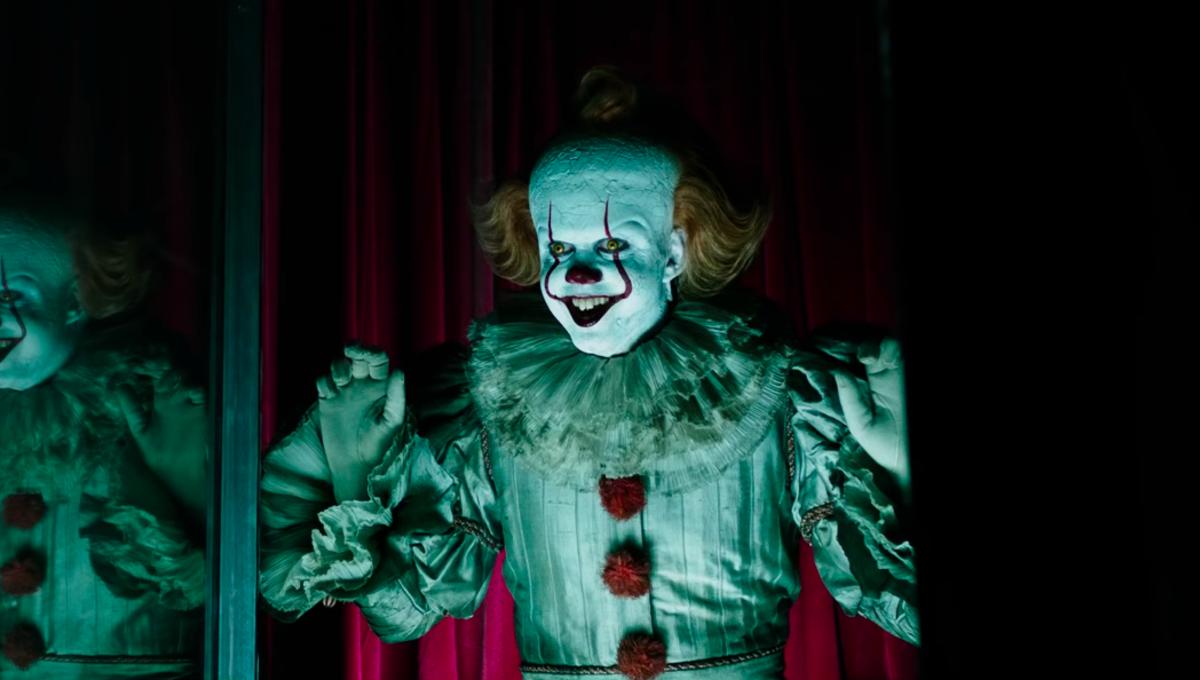The horror in Derry has come to an end. In Andy Muschietti’s It: Chapter Two, the Losers Club return to their hometown twenty-seven years later to finally defeat the interdimensional demonic clown monster that plagued their youth. It: Chapter Two isn’t quite as enthralling as its predecessor due to a bloated script the resulting overly long run time. However, the script hits every emotional beat successfully and delivers a satisfying conclusion to the menace that is Pennywise the dancing clown — making for an over-all enjoyable viewing experience.
It: Chapter Two’s narrative doesn’t feel quite as tight as its predecessor, It (2017), with a collection of good scenes that do not come together as a cohesive whole. This is due to a lack of narrative momentum, as Chapter Two frequently spends its rather long run time exploring surplus elements of the plot that work better in a novel than a film. In that way It: Chapter Two becomes a perfect Stephen King adaptation in that more of the fat should have been trimmed in the editing room.

The inclusion of aged bully Henry Bowers, for example, is superfluous. His role in the narrative fits thematically — conquering past fears — but the film would work just as well without his presence. Rather than serve as a looming threat in the back of the audience’s mind, he feels like an afterthought — a result of trying to remain faithful to the film’s source material. The titular monster provides enough of a threat to the protagonists that the psychotic bully is wholly unnecessary. Despite the overstuffed and somewhat meandering nature of It: Chapter Two’s script, the film does have good character work brought to life by strong performances.
The casting for It: Chapter Two was fantastic, with every actor doing an excellent job with the script. Bill Hader and Jessica Chastain are the two stand out performances, helped by the fact that their characters have the most compelling character development. The character beats, though somewhat repetitive, work well. The Losers Club are forced to reckon with their past, both battling Pennywise and their own inner demons. The stories and character relationships from It (2017) are revisited from the perspective of an adult looking back at a child hood they barely remember, which is utilized to strong effect in some instances. Richie (Bill Hader) and Beverly (Jessica Chastain) probably have the best character arcs in It: Chapter Two. Their personal storylines don’t feel repetitive – like Bill’s guilt over his brother’s death – and they make the most of using the adult perspective to view childhood events.

Pennywise and his — loosely defined — terrifying abilities, make for solid VFX work. The ending sequence shows the clown at his most terrifying. Skarsgard’s twisted portrayal of Pennywise, the titular It, is terrifying and layered. Pennywise is more than just a generic monster, but a being with fears and anxieties like his prey. That small detail makes the It films stand out amongst other monster films, Skarsgard’s performance captures that vulnerability without losing Pennywise’s sinister nature. Despite the mixed quality of the It film series, I do hope Skarsgard’s Pennywise goes down in history as a classic film monster.
It: Chapter Two strikes a good balance between horror and comedy, offering moments of levity in a rather dark and twisted narrative. The movie knows when to be scary and when to add some levity, with only one or two moments coming off as tonally confused. One of those scenes has Beverly return to her childhood home — seen heavily in the teasers and trailers for Chapter Two. The whole scene is hilarious, until you realize it is supposed to be scary.

It: Chapter Two is an enjoyable film, largely due to strong performances from the cast and a terrific villain. Not worth a second viewing, but a good time at the movie theater nonetheless.
Rating: 6.5/10

